VILE ELECTRODES combine an analogue synthesizer obsession with the imagery of alternative fetish fashion.
Led by the statuesque redhead Anais Neon, the colourful trio also feature Martin Swan who often loses himself behind his temple of synth, hidden by what looks like the European Union’s spaghetti mountain and Loz Tronic on keyboards / guitar. Drawn together by the desire to escape reality through dressing up, their club friendly songs ‘Present Danger’ and ‘Empire Of Wolves’ capture this electro-goth fantasy world.
Meanwhile their lively and catchy musical style at times sounds like THE SMITHS reincarnated as CLIENT as on the excellent ‘Play With Fire’ and ‘Proximity’. Their other standouts include the wonderful ‘Feed Your Addiction’ which comes over like a tribal ‘Fade To Grey’ while the sensational ‘Deep Red’ is an epic seven and a half minutes worth of classic ORCHESTRAL MANOEUVRES IN THE DARK (as opposed to OMD) with rich, shimmering string layers punctuated in its second section by some solemn, funereal percussion.
Although some have considered their sexually deviant presentation as a distraction with one observer commenting: “Oh god no! They’re like CLIENT after a shopping spree in Ann Summers!”, VILE ELECTRODES’ dynamic synthpop sound comes over best in the concert environment with Anais and Loz in particular often playfully whipping percussion pads like a pair of dominatrixes.
Aiming to capture their live sound on record with their debut album, Anais and Martin chatted to ELECTRICITYCLUB.CO.UK about their history and future plans…
How did VILE ELECTRODES first come into being?
Anais: Martin and I met at work. At the time he was in another band, which gave him an air of cool mystique, this guy with strange coloured hair and strange clothes. After some prolonged wooing – mostly on my behalf! – we started dating. After a few nights out at grimy clubs he eventually invited me to his humble abode. I headed to his, full of anticipation… and he met me at the door in his dressing gown! He led me into his lounge, which was filled with rows of ‘plastic pianos’. I didn’t know what they were – my experience of keyboards extended to the ones you could get in the Argos catalogue. Of course, they were synthesizers and he proceeded to play them at me all night. I remember thinking “this guy’s a bit weird – not sure that this is going to go anywhere” *laughs*
I’d never been in a band before, but we starting dabbling and experimenting with music together. It was never intended to be too serious, because I was way too nervous, and I had absolutely no confidence as a performer. But then my mum died and it put the need to seize the day into total perspective. I thought “What the hell? What’s the worst that can happen? People might hate it! So what! Maybe I won’t actually like doing it!” – but at least I would know that I gave it a shot. No regrets!
Martin, impressing girls with synthesizers? That’s always been a difficult thing to do as it is! What brought that on?
Martin: I don’t remember it happening quite that way… I always knew that Anais was musical, even before she ever revealed to me that she could sing. We were in the car and she was singing quietly and I asked what it was. She said “oh, it’s a song that I wrote”.
After some arm-twisting I made her sing the song in full and it was a brilliant song. Music and creativity were a couple of the things that first brought us together – clubbing, dancing and dressing up. They were the first things that we had in common. For me, you can’t separate going out clubbing and to gigs etc from making music. They all go hand-in-hand and inspire each other. So my excuse for introducing Anais to my sordid world of synthesizers was that I recognised a kindred musical spirit.
Sarah Blackwood from CLIENT and DUBSTAR has told me she thinks VILE ELECTRODES is such a great name for a band. Where did it come from?
Anais: We formed bands with various names, RED STAR WINTER ORBIT, STRANGE FRUIT, SPITALFIENDS – none of which stuck. And then we wrote a song about being unable to tear yourself away from someone, even though they’re bad for you. It’s like they’ve got… “vile electrodes wired to your brain”! And, thus, VILE ELECTRODES were born.
How did Loz end up joining the group?
Anais: We started off as a two-piece, did some gigs and I was just terrified up there… like a rabbit in headlights, stood stock still on stage. People would say “Oooh, the aloofness really works. You’re like an ice maiden” and I never knew whether to fess up “that’s because I’m f***ing sh*t scared”! Martin and I talked about recruiting more people to the band, so there was more support for me on stage, strength in numbers against the audience! Some friends joined the line-up for a few gigs, but ultimately it wasn’t really for them and we ended up as a two-piece again.
I got to thinking about this girl I knew from MySpace called Loz Tronic. I’d randomly emailed her one day to tell her she was beautiful – if I recall correctly I said she was “compelling to behold”! Nothing like the direct approach, eh? I assumed she’d think I was the biggest weirdo and I never expected to hear back, but she replied, flattered and bemused, and we struck up an online friendship. It turned out she did music too, and we were both really into each other’s sounds.
About a year after meeting her online, I asked if she’d consider joining the band – and she jumped at the chance! Having her on board really helped us in terms of picking up momentum. She was just really cool and confident which allowed Martin and I to focus on what WE were doing. Loz was like “Yup, I’ll play whatever… Sing? Sure! Guitar? No problem”.
What were your individual favourite music tastes at the time?
Anais: Before Martin, I’d dated a guitarist for a long time and I’d gotten quite into jazz and blues off the back of that. To this day, one of my favourite bands is a blues band called THE HOAX. I liked cheesy danceable pop like BRITNEY and KYLIE, and I was really into OASIS and lots of Britpop stuff. Car journeys as a child with my mum had formed a lot of my musical tastes. I’m still a big LIONEL RICHIE and QUEEN fan. And KOOL AND THE GANG!
In reality there was very little electronic music on my radar… I do vividly remember pulling into work one day and hearing this song begin on the radio. I was already late but I had to stay in the car to listen to the whole song. I saw Martin a bit later and said “I heard this brilliant song on the radio. It’s by a band named ‘Fish Spoon’ called ‘Emerge’!” *everyone laughs*
Martin said “I’ve got their performance on Top Of The Pops on video” and we sat down and watched in the editing-studio at lunchtime, holding hands. Martin introduced me to the electroclash scene and a lot of stuff like PEACHES and MISS KITTIN, but FISCHERSPOONER was like my first independent find I suppose *laughs*
Martin: When we first met, Anais’ musical taste was “I like ALL music”… y’know how girls always say that don’t they? *everyone laughs*
But I can kind of understand that. Music inspires you and can totally enhance your mood and there’s good music within all genres. Whereas with guys, I think it becomes more of a tribal thing, and that you belong to a gang. That’s what gets most guys into a particular style of music, in my opinion.
Which synthpop gangs did you belong in then?
Martin: My very first synthpop gang – well it wasn’t really a gang at my school because it only really consisted of me – was GARY NUMAN! My first proper album, as opposed to a Top Of The Pops compilation album, was TUBEWAY ARMY’s ‘Replicas’. I still listen to it a lot and you can’t under-estimate the influence this has had on my life. Before that, I’d been into “ALL music” and then I heard this; it was dark but it had melodies and it had this amazing atmosphere. It was the sound of the future!
Anais: You were really kicking against what your friends were doing, weren’t you?
Martin: I was into Two Tone and things like that, so I was into what everyone else liked in the charts at the time, but Replicas was the first time I realised there’s was something far deeper here than a three minute pop song. So it all began there really! That was when I formed my first band – ILL TREATMENT! It was more of a punk band though…
So did you play guitars yourself at that time?
Martin: No, I was left-handed…
Anais: He still is *laughs*
Martin: … and left-handed people were still regarded as twisted freaks at my school. I found it really difficult to find someone to teach me how to play guitar. The guitar teacher at my school tried to get me to play right-handed and I just couldn’t do that, and I lost interest.
I started going down to Dixons on a Saturday afternoon to play all the little Casio keyboards, and annoy all the shop assistants!
After the NUMAN thing, I got into ADAM & THE ANTS and ULTRAVOX, and things like that. But then I discovered OMD – quite late compared to some people. I actually got into them around the time of ‘Junk Culture’, but then I revisited their back catalogue. That was in the day when you could find records by artists for £2.99 in Woolworths and I collected all of the OMD records. You could pick up all these 12 inch singles and I remember going to every Woolworths in all the bland satellite towns I grew up in – Watford, St Albans and Hemel Hempstead – to look in the dusty bargain bins and finding the 12 inch of ‘Tesla Girls’, and the ‘alternate’ version that they only released a few of and I was like, “I’m having that”! I was buying Record Collector and getting into all of that. So I was seriously into OMD, and then when DEPECHE MODE released ‘Violator’, it just took me somewhere else completely.
When I first heard your stuff, the one that struck me was ‘Deep Red’ which sounds like CLIENT doing OMD. How did that come about?
Martin: Musically, if you listen to our songs, you can quite clearly hear the different geneses of the songs. Inevitably, with the music I’m into, there’s always an OMD, GARY NUMAN, JOHN FOXX, HUMAN LEAGUE kind of feeling to things. ‘Deep Red’ was written in the studio and started out with a really simple drum-beat and a little bassline arpeggio on the Roland Juno 6. I was playing this riff and Anais said “I like it” and …
Anais: Either I will go “I like it” and I’ll write some lyrics really quickly or say straight out “I’m never going to write a song to this one, I’m really sorry”. It drives Martin mad sometimes, but it’s just how it goes!
Martin: It was one of those classic songs where we wrote it in about the same length of time as the song lasts…it is a long song but it came together so quickly! But one of the things we’ve learnt is that our best songs come like that, without us trying really. ‘Deep Red’ is a bit of a reference to those OMD songs that only ever made it to be B-sides or albums tracks, but which I used to make endless compilations of – ‘Stanlow’, ‘Sealand’, ‘Romance Of The Telescope’, ‘Annex’ – stuff like that. Sweeping, atmospheric songs that just encompassed and explained everything about life and death and everything in between. Pop bands tend not to do that.
Lyrically, there’s a story behind that isn’t there?
Anais: Indeed there is. And I’m not ashamed to tell the truth about it… *pauses* I’d had my heart broken, plain and simple. Most songs out there are about love and heartbreak, so I know it’s not breaking any boundaries, but I wondered if I could find catharsis through writing a song about the experience, or whether I should just walk away. I chose the former.
For me, ‘Deep Red’ is one of the most significant VILE ELECTRODES songs because the reason it exists is so significant. And it’s the reason VILE ELECTRODES still exist! Maybe that’s why a lot of other people like it so much – because they recognise a genuine song about genuine heartbreak.
On the other end of the scale, you got these great indie pop songs with synths like THE SMITHS versus CLIENT of ‘Play With Fire’. Who takes the lead in a song like that?
Martin: That was all originally written on a laptop really quickly on the way to the studio, and then finished off in about 20 minutes – people often say the best songs are written that way.
Anais: We had quite an extensive back catalogue of songs before we wrote that track, but it was the first song that we went “this is a song!”
Martin: I think it’s interesting you mention THE SMITHS and the indie thing because I always think it sounds like an indie track and actually reminds me of THE KILLERS’ first album in that it sounds like a band trying to write a DURAN DURAN song with a big chorus and some strident synths. *everyone laughs*
Anais: We’re actually re-recording it at the moment, but it’s quite weird doing that because people really like it how it is. What if it loses something!?
Martin: The important thing for the song; at the time we wrote it, we weren’t really sure if we were a band that wanted to pretend we had real instruments, or whether we were a band who acknowledged using laptops and synths.
Anais: In the early days, we gigged with just a laptop and a couple of MIDI-keyboards.
Martin: The bass and the drums on it are my attempt at using Logic to make a more live sounding rhythm section; it has more of a ‘live’ feeling than some of our other songs which was a conscious decision. Since we’ve been playing it live these last couple of years, it’s evolved into something else much more VILE ELECTRODES. That idea of it being ‘live’ but actually all synths is important.
What I think you’ve got nailed is the live sound, but it’s quite different from listening to your stuff via Soundcloud. How are you going to capture that for the album?
Martin: I’ve replaced the virtual instruments on ‘Play With Fire’ with real synths, either physically played or where there’s a sequence, I’ve hooked old analogue synths up to the MIDI code and we trigger them live. We’ve done that but the other side is that I’ve recorded the live version of the song straight into a soundcard so it’s playing it in the studio as we would play it live, with all the random things that aren’t meant to happen – bits that clash and sound wrong. That’s one of the things you lose when you record solely on laptops in my opinion. But for me, the music that I love has always had a strong human element in it, even if it was made on electronic instruments.
Anais: When we wrote ‘Play With Fire’, I was still an incredibly nervous singer and I couldn’t even have Martin in the room when I was recording. What we’ve actually captured on the current Soundcloud version is a massive under-performance, lest Martin hear me from the other room! Now, when I sing, I enjoy it and that’s what we’re trying to capture. And it mustn’t be too clinical either! It’s the same with the live synths. Wholly laptop produced tunes may be zingy and clean but you lose that warmth and wobbly fragility that you get from real synths.
Which of the current crop of synthpop bands do you find inspirational as kindred spirits?
Martin: I think MIRRORS are really interesting and I like what they’re doing. I’m following them – I hope they can make the step up to the next level. The fact that they are seen as leaders of a bit of vanguard, you need to have bands doing that and I really respect what they’re doing and I also like what they’re saying about how they use technology.
Anais: We’ve become good friends with a lot of people off the back of seeing their bands play live. We try to support other bands as much as possible as we know how hard it is to be a gigging band! I really like KATSEN and wish they would gig more! And there’s FAKE TEAK, who are a really nice bunch of boys doing really cool analogue stuff.
Largely, though, I have to admit that I’ve always been quite a superficial music appreciator. Even more so since we’ve been making music together because I spend so much time working on our own stuff that I forget to raise my head above the parapet. And, as Martin mentioned earlier, I really do like pretty much like ALL music. If it has a bit of a beat and a bit of a tune, I tend to tap my foot to it and feel happy.
Martin: I have to name check XENO & OAKLANDER, they’re from Brooklyn and on the Wierd record label. They do cold wave stuff. We saw them last year and they absolutely blew me away. The songs are really good but they turned up with five SH101s and their entire set-up was being run from an old-school sequencer and they were doing it all live. What was really inspiring was that they were making the music they really wanted to make but not compromising with the technology, it must have taken them hours to set it all up and I really respect that.
Anais: LED ER EST supported them, and they’re pretty awesome too. There’s also MY ELASTIC EYE, I like them…
Martin: They’re club kids and getting loads of press. Felicity Hayward is the singer, she’s hot, she’s done modelling for several famous designers I think and…
Anais: She’s a gorgeous curvy bleached blonde bombshell basically…
Martin: When we saw them, we thought they would be aloof but they were really nice people, I’ve got a lot of time for them. And I have to mention LADYTRON. They’re not so new in a way, but they are consistently brilliant, and started doing synthpop when people laughed at the word. Respect, awe and thanks to them for keeping the faith when all around them doubted.
When can expect a VILE ELECTRODES album?
Anais: We’ve finished recording the EP and we’re working on the album now. We’ve all been so busy, though, and we’ve still not managed to record Loz’s parts yet!
Martin: What’s very important is that we capture that live thing and that’s what we’ve been working on. The plan is that we’ll release a three-track EP first and then we’ll start gigging again with the album depending on how quickly we can do it.
ELECTRICITYCLUB.CO.UK gives its sincerest thanks to VILE ELECTRODES
The extended version of the VILE ELECTRODES’ song ‘Proximity’ features on Electropop 6, a CD compilation released by Conzoom Records
http://vileelectrodes.blogspot.com/
https://www.facebook.com/vileelectrodes
http://soundcloud.com/vile-electrodes
Text and Interview by Chi Ming Lai
25th August 2011

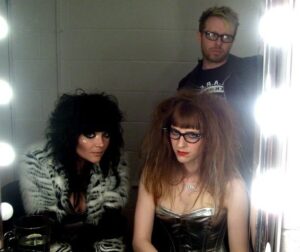
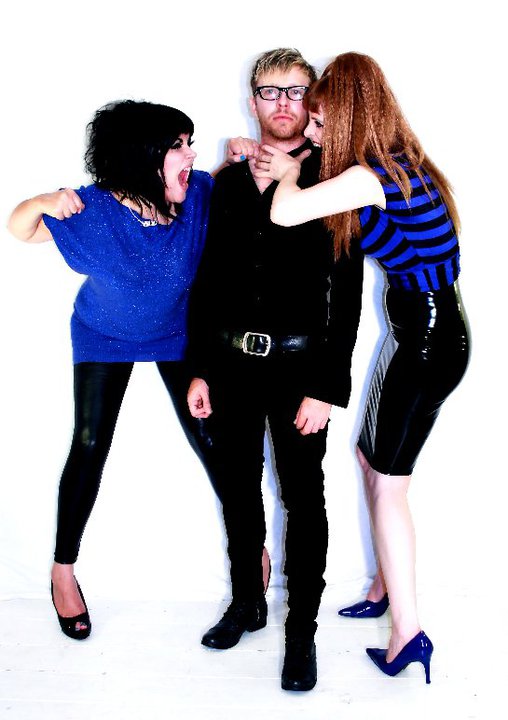
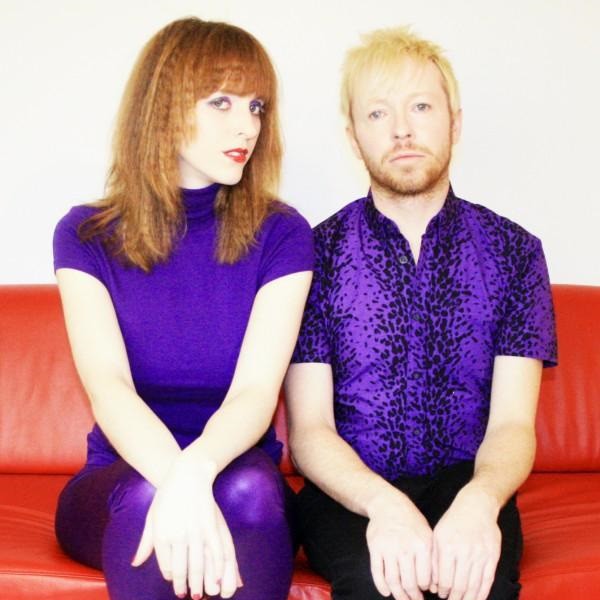
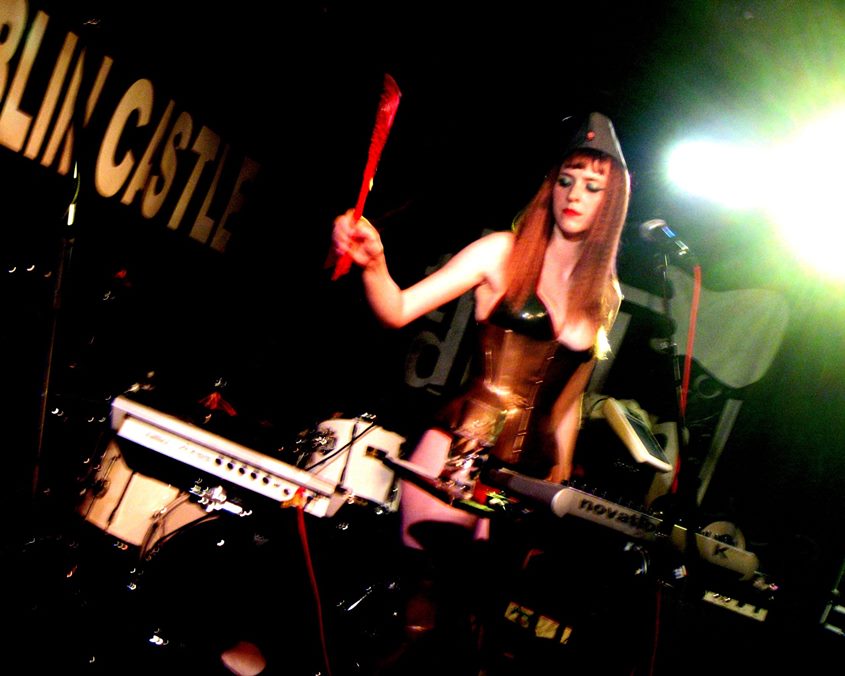
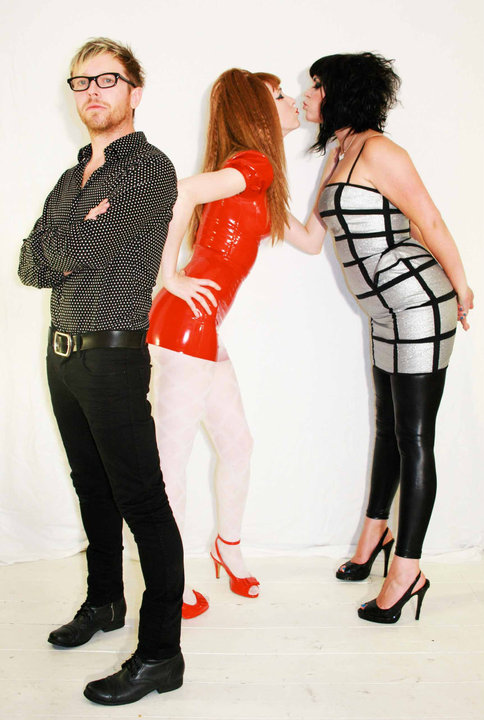
Follow Us!